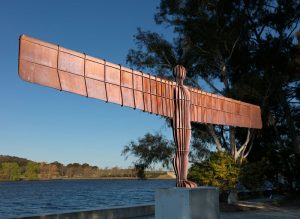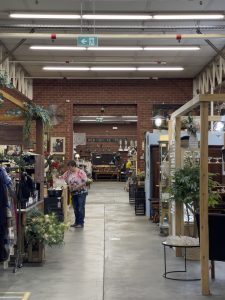Photographing The World's Precious Works of Art
Lisa Mattiazzi, is the manager of imaging, design and publishing at the National Gallery of Australia. She handles and photographs some extremely expensive and famous artworks from around the world, including Jackson Pollock’s “Blue Poles”. I talked to her to find out what it’s like being a photographer at the NGA.
Q: What is involved in your job?
A: I am the manager of imaging, design and publishing. Most of my job is managing the imaging side of the gallery. My team shoot about 10,000 artworks a year and that can be a mix of textiles, jewellery, paintings, works on paper and sculptural installations as well as events. I manage five full-time photographers, and I also manage the design and publishing side of the team.
Q: What is the most interesting part of your job?
A: Seeing the variety of artwork that you’ll come across and learning about the artist or what they have tried to say or do with their art. I think art is quite subjective but they have such an enormous variety of artwork at the gallery.
Q: What happens to the artworks once you have photographed them?
A: If there is an exhibition coming up, we have to photograph those works before they go on display, sometimes the works will come into the gallery and then go out again before coming back in, this has quite an impact on resources so we do try to limit the movement. Sometimes the pieces will go back to storage or then go on display or to conservation.

Q: Do artworks ever get broken or go missing?
A: There are works that are listed in the data base as TBL which means to be located, so it has a history of where it was last located. Sometimes the photographers can have boxes come in and they will find something that’s in a box that shouldn’t be there and they can notify staff, but generally we look in the last known location if a piece is lost. As far as objects breaking, I have not seen much of that in my time but there was a really fragile shell necklace that came in for photography and the necklace was probably from the 1800’s, the curator went to move it on the stand that the photographer was photographing it on. When they moved it, it snapped and broke, all these tiny shells 4 or 5mm long, hundreds of them just went all over the place. When that sort of stuff happens they just ring conservation and they will come to fix it. Works will have wear and tear and there are certain works that won’t be put on display because they can be destroyed in certain lights. Conservation staff advise on that sort of thing.
Q: Do you have a favourite piece of artwork?
A: Angel of the north by Antony Gormley in the sculpture Garden is a work that resonates for me and a highlight. I enjoy the way it looks and feels on different days with hot sunny days or soft enveloping fog on winters days and how the colours of the sculpture create different impressions each time with the natural landscape around it.





Be the first to comment!